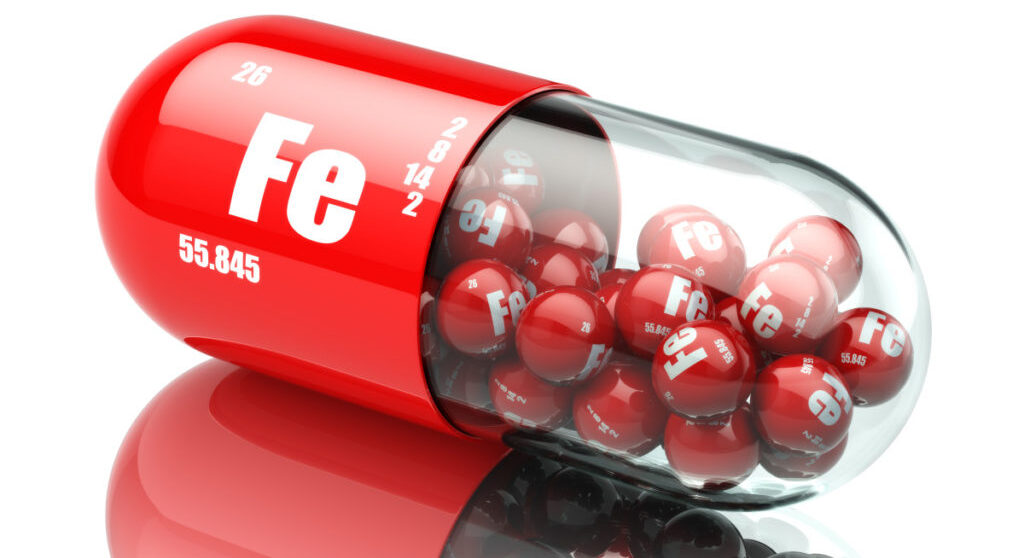Iron IV Therapy
Ultimate Guide to Iron IV Therapy
Iron IV therapy is an essential treatment for individuals with iron deficiency anemia who are unable to tolerate or absorb oral iron products. This ultimate guide to iron IV therapy will delve into the importance of iron infusions for those suffering from iron deficiency anemia, examining the clinical application of IV iron and its intravenous formulation.
Iron IV therapy is crucial for patients who do not respond well to oral iron supplementation or who require rapid replenishment of iron stores. It is also beneficial for those with chronic diseases that hinder iron absorption or increase iron loss. The ability to administer higher doses of iron directly into the bloodstream allows for faster restoration of iron levels and more effective treatment of anemia.
Understanding the treatment targets and clinical considerations for IV iron therapy is essential for healthcare professionals and patients alike. This comprehensive guide will explore the various intravenous iron formulations available, appropriate dosing regimens, and the monitoring of treatment response to ensure optimal outcomes for individuals with iron-deficiency anemia.
What is an iron infusion?
An iron infusion is a medical procedure used to treat iron deficiency anemia. This therapy is necessary when oral iron supplements are ineffective or cannot be tolerated. During an iron infusion, a solution containing iron is administered directly into the patient’s bloodstream through an intravenous (IV) line. The purpose of this procedure is to rapidly increase the levels of iron in the body, as iron is essential for the production of red blood cells and overall bodily function.
Iron infusion therapy is appropriate for individuals with severe iron deficiency anemia or those who cannot absorb iron adequately through oral supplements. The treatment is typically administered in a hospital or clinic setting and usually takes a few hours to complete.
Potential side effects of iron infusion therapy may include nausea, vomiting, headache, and low blood pressure. However, the benefits of iron infusion therapy are significant and can include increased energy levels, improved exercise tolerance, and better overall health.
In summary, iron infusion therapy is an effective and necessary treatment for individuals with severe iron deficiency anemia who cannot tolerate or absorb oral iron supplements. While it may have potential side effects, the benefits of this therapy are essential for improving iron levels and overall health.
Iron infusion benefits
Iron infusion benefits include a multitude of positive outcomes for individuals who are struggling with iron deficiency anemia, or who are unable to absorb iron properly through oral supplementation. Some of the key benefits of iron infusion therapy include a rapid increase in iron levels in the body, which can help to alleviate symptoms such as fatigue, weakness, and shortness of breath. Additionally, iron infusions can provide a quick and effective way to replenish iron stores for those who are unable to tolerate or absorb oral iron supplements. This type of treatment also reduces the risk of gastrointestinal side effects that are commonly associated with oral iron therapy. By receiving iron infusions, patients can experience a significant improvement in their overall quality of life and energy levels, helping them to better manage activities of daily living and potentially avoid more invasive measures such as blood transfusions or surgical interventions.
What to Know About Iron Infusions for Iron Deficiency Anemia
Iron infusions are a common treatment for iron deficiency anemia, and there are several types available. The most commonly used types of iron infusions include iron dextran, ferric carboxymaltose, and iron sucrose.
The dose and frequency of iron infusions vary depending on the type used and the severity of the anemia. Generally, iron infusions are administered in doses ranging from 100mg to 1000mg, and they are usually given every 1-2 weeks until iron levels improve.
Iron infusions work by delivering iron directly into the bloodstream, bypassing the need for absorption in the gut. This allows for a rapid increase in iron levels in the body, helping to relieve symptoms of iron deficiency anemia such as fatigue, weakness, and shortness of breath.
Overall, iron infusions are an effective way to replenish iron levels in the body and provide relief from the symptoms of iron deficiency anemia. It is important to discuss with a healthcare provider to determine the most suitable type, dose, and frequency of iron infusions for individual needs.
How do iron infusions work?
Iron infusions are often used to treat iron deficiency anemia when oral iron supplements are not effective. This medical procedure involves delivering liquid iron directly into the bloodstream through a vein. Iron infusions can be administered in a hospital, clinic, or doctor’s office and are typically performed over some time. The iron is slowly released into the body, where it is used to produce red blood cells and increase the body’s iron stores. This treatment can be beneficial for individuals who have difficulty absorbing iron through the digestive system or who have experienced severe blood loss. Understanding how iron infusions work can help individuals with iron deficiency anemia make informed decisions about their treatment options.
Before the Infusion
Before undergoing an iron infusion, it is crucial to undergo blood tests and a physical exam to assess your overall health and determine if you are a suitable candidate for the procedure. These tests help to identify any underlying conditions that may impact the infusion or any potential risks associated with the treatment. Additionally, fasting before the infusion is important to ensure accurate results from blood tests and to reduce the risk of potential side effects during the procedure.
In preparation for the iron infusion, it is essential to have any questions or concerns addressed by your doctor beforehand. It is also important to confirm the availability of Injectafer IV iron and ensure that all necessary documentation, such as insurance information and identification, is brought to the infusion center.
By following these important steps, you can help ensure that the iron infusion is safe and successful and that you are properly prepared for the procedure.
During the Iron Infusion
The iron infusion process involves the administration of an intravenous (IV) solution containing iron to increase iron levels in the body. Before the infusion, the healthcare provider will assess the patient’s vital signs and start an IV line. The iron solution is then slowly infused through the IV over 1-2 hours.
Potential side effects of the iron infusion may include nausea, dizziness, headache, and allergic reactions. It is important to communicate any adverse reactions to the healthcare provider immediately. Patients should also inform the practitioner if they have a history of allergic reactions to iron or other medications.
After the infusion is complete, patients are typically monitored for at least 30 minutes to ensure they do not experience any immediate adverse effects. It is important to stay at the clinic for this monitoring period to ensure safety.
The duration of the iron infusion process, including preparation and monitoring, typically ranges from 2-3 hours. Patients need to follow up with their practitioner for any ongoing symptoms or concerns after the infusion.
In summary, the iron infusion process involves IV administration of an iron solution, potential side effects to be aware of, the importance of communicating with the practitioner about any adverse reactions, and the necessity of staying at the clinic for monitoring after the infusion is complete.
After the Iron Infusion
An iron infusion can significantly improve energy levels and overall health for individuals with iron deficiency. However, it is important to diligently monitor your health after the procedure to ensure any potential complications are addressed promptly. Symptoms that may require immediate medical attention after an iron infusion include severe chest pain, difficulty breathing, swelling of the face or throat, severe headache, or sudden weakness or numbness in the extremities.
If you experience any of these symptoms, it is crucial to seek medical assistance immediately. Contact the doctor who administered the iron infusion or go to the nearest emergency department for prompt evaluation and treatment. It is also important to stay in regular communication with your healthcare provider to report any unusual or concerning symptoms that may arise post-infusion.
Monitoring your health after an iron infusion is vital for a safe and successful recovery, so do not hesitate to seek assistance if any concerning symptoms arise.
Types of Iron Infusion
There are several types of iron infusion treatments available to address iron deficiency anemia. One common type is iron dextran, which is beneficial for patients who cannot tolerate oral iron or for those who need a rapid increase in iron levels. Another type is iron sucrose, which is often a preferred choice for patients with chronic kidney disease or those undergoing hemodialysis. Iron carboxymaltose is a newer form of iron infusion that allows for larger doses to be administered in a shorter amount of time.
The benefits of iron infusion include a quicker increase in iron levels compared to oral supplementation and a lower risk of gastrointestinal side effects. However, potential side effects can include headache, nausea, and dizziness. Factors to consider when choosing the right type of iron infusion include the patient’s medical history, any underlying conditions, and the severity of anemia.
The most common cause of anemia is iron deficiency, which is essential for the production of hemoglobin. It is important to note that iron infusions are typically recommended when oral iron supplementation is not effective or feasible. Taking iron by mouth while receiving infusions can lead to an excess of iron in the body, causing toxicity. Therefore, it is crucial to follow the guidance of a healthcare professional when undergoing iron infusion treatment.
Iron Dextran
Iron dextran is an effective treatment for iron deficiency anemia, as it quickly raises iron levels in the body. However, it also comes with the risk of severe allergic reactions. This can make it a less favorable option for some patients. Additionally, the intravenous administration of iron dextran can be inconvenient and uncomfortable for patients.
This treatment is typically reserved for patients who cannot tolerate or absorb oral iron supplements, such as those with chronic kidney disease or inflammatory bowel disease. The risk of severe allergic reactions also limits its use, as patients with a history of allergies may not be suitable candidates for iron dextran therapy.
Due to the drawbacks of iron dextran, alternative forms of iron therapy, such as oral iron supplements or other intravenous iron products, are often needed to provide a safer and more convenient option for patients. These alternatives can be just as effective in raising iron levels without the risk of severe allergic reactions, making them a better choice for many individuals with iron-deficiency anemia.
Iron Sucrose
Iron sucrose infusion is typically administered in a hospital or clinic setting. The process involves diluting the iron sucrose solution and then slowly infusing it into a vein over some time, usually around 1-2 hours. This slow infusion helps to minimize the risk of adverse reactions.
Common side effects of iron sucrose infusion may include headache, dizziness, nausea, and minor skin reactions at the injection site. More serious side effects such as anaphylaxis are rare but possible.
Iron sucrose is effective in raising iron levels in patients with iron-deficiency anemia, especially in those who cannot tolerate oral iron supplements. Compared to other forms of iron, such as ferrous sulfate, iron sucrose has a lower risk of gastrointestinal side effects and is generally well-tolerated. Additionally, studies have shown that iron sucrose may result in a more rapid increase in hemoglobin levels and overall improvement in iron status.
Overall, iron sucrose infusion is a safe and effective option for addressing iron deficiency when oral iron supplementation is not feasible or effective.
Ferric Carboxymaltose
Ferric Carboxymaltose (FCM) is a stable iron complex with therapeutic efficacy in treating iron deficiency. Its rapid infusion capabilities allow for the administration of larger single doses over a shorter infusion period, making it convenient for patients and healthcare providers. FCM is effective in raising iron levels and improving hemoglobin (Hb) levels, addressing anemia associated with iron deficiency.
FCM has been approved for use and has a favorable safety profile, with low immunogenic potential and real cost-saving benefits compared to other iron infusion therapies. It provides the advantage of increasing iron levels more rapidly and with fewer infusions, leading to improved patient compliance and reduced healthcare costs.
Overall, FCM offers a reliable and efficient treatment option for iron deficiency, with the ability to quickly raise iron levels and improve Hb levels, ultimately benefitting patient outcomes.
Iron Isomaltoside
Iron isomaltoside is a type of intravenous iron therapy used in the treatment of iron-deficiency anemia. It is administered as a rapid high-dose infusion, making it a convenient and time-efficient option for patients. The low immunogenic potential of iron isomaltoside reduces the likelihood of adverse reactions, making it a safe choice for individuals with iron deficiency.
One of the key benefits of iron isomaltoside is its potential for full iron repletion in a single infusion, meaning patients may only require one treatment to achieve optimal iron levels. This not only reduces the burden on patients but also on healthcare services.
Compared to other IV iron agents, iron isomaltoside offers the advantage of rapid high-dose infusion and a lower risk of adverse effects. This can lead to improved patient outcomes and satisfaction, as well as potential cost savings for hospitals and healthcare providers.
In conclusion, iron isomaltoside is a valuable option for the treatment of iron-deficiency anemia, offering rapid high-dose infusion, low immunogenic potential, and the potential for full iron repletion in a single treatment, which can lead to improved patient and hospital/health service benefits.
Conclusion: Ultimate Guide to Iron IV Therapy
In conclusion, iron IV therapy is a crucial and effective treatment for iron-deficiency anemia. The infusion of iron directly into the bloodstream allows for quicker and more efficient absorption, leading to rapid improvement of symptoms such as fatigue, weakness, and shortness of breath. However, patients need to weigh the potential benefits of iron therapy against the risks, such as allergic reactions and iron overload.
Patients should also consider important factors such as their overall health, any existing medical conditions, and potential drug interactions before undergoing treatment. Additionally, it is vital for healthcare providers to carefully monitor iron levels and adjust the dosage as needed to prevent complications.
Ultimately, the key takeaway information from the ultimate guide to iron IV therapy is that it can significantly improve the quality of life for individuals with iron-deficiency anemia, but it is essential to weigh the potential risks and make informed decisions with the guidance of a healthcare professional.



